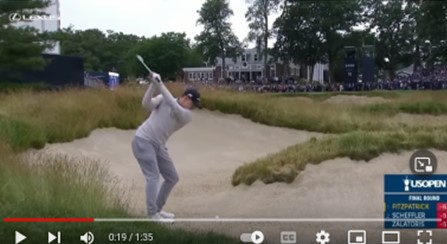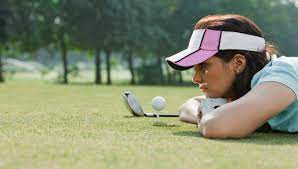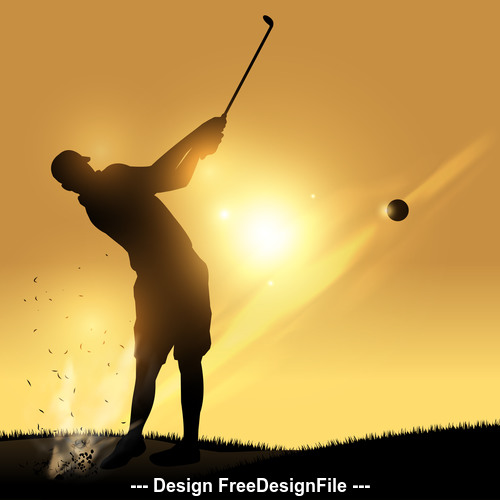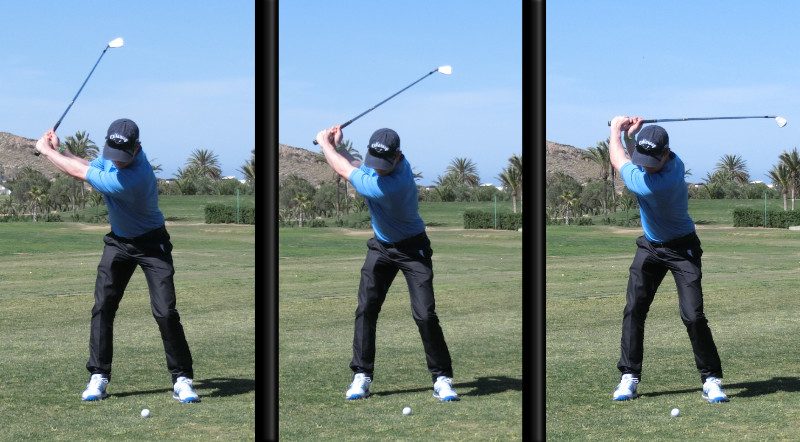You should actually start your downswing by pressing your leading hip forward but I was hoping to get your attention by referring to YOUR BUM. The shift of your hip is caused by a slight bend of your leading knee which will shift your leading hip and shoulder during the transition at the top of your swing. This motion should happen before your forearms start their downswing.
The downswing for low handicap golfers starts during their transition as their weight starts to transfer to their leading foot. This is especially important for iron shots to ensure that you are shifting to allow your club to impact the ball before taking any divot. If you are rushing your transition, you should notice that you are often hitting the ground before the ball and losing distance. If this is your problem, we have a solution for you.
The downswing chain reaction starts from your foot to your hip and then your shoulder rotation starts your straight leading arm downswing. The release of your cocked wrists to whip your club through the ball is last and most important part of your downswing to generate power.
Solution for the Rushed Transition
If you are one of the many golfers who starts their downswing before their weight shift to their leading leg, you need to learn the feeling for this change and see the impact of an improved swing.
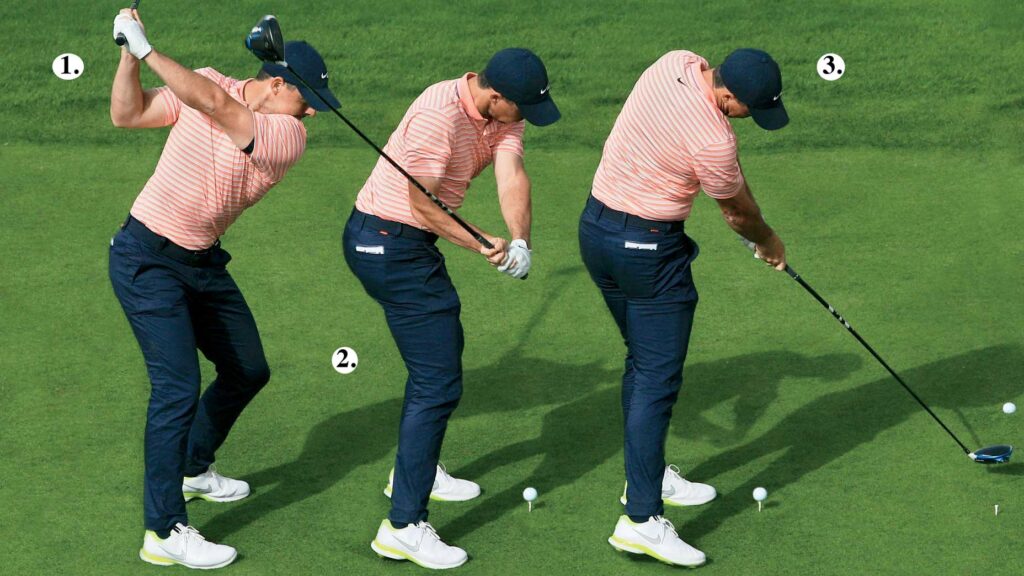
CHEAT your forward “pressed position” during your setup with 60% of your weight on your leading leg by ADDING bend to your leading knee. That’s the move that you really want to make at the top of your swing but by starting with this forward press during your setup, you can learn the feeling that you want to add during your transition.
Trainers and pros will NOT recommend that you learn to play with this “forward pressed position” DURING YOUR SETUP as it can cause problems with your direction control. Test this forward press setup at 60% to 80% of your swing speed to avoid pulls or fades by focusing on swinging up your target line. Your clean shots (without fat hits) will dramatically improve.
Use this CHEAT to learn the feeling of the forward press that you want during your transition. After a number of successful hits, learn to include this forward press in your normal swing with irons. Then let your BUM and hips trigger this forward press. Practice with your GOLFSTR+ to keep your leading arm straight and enjoy your powerful wrist release at the bottom of your swing without fat hits. Buy one today at www.GOLFSTR.com
Thought for the Day: It’s easy to keep your ball in the fairway, if you don’t care which fairway.






